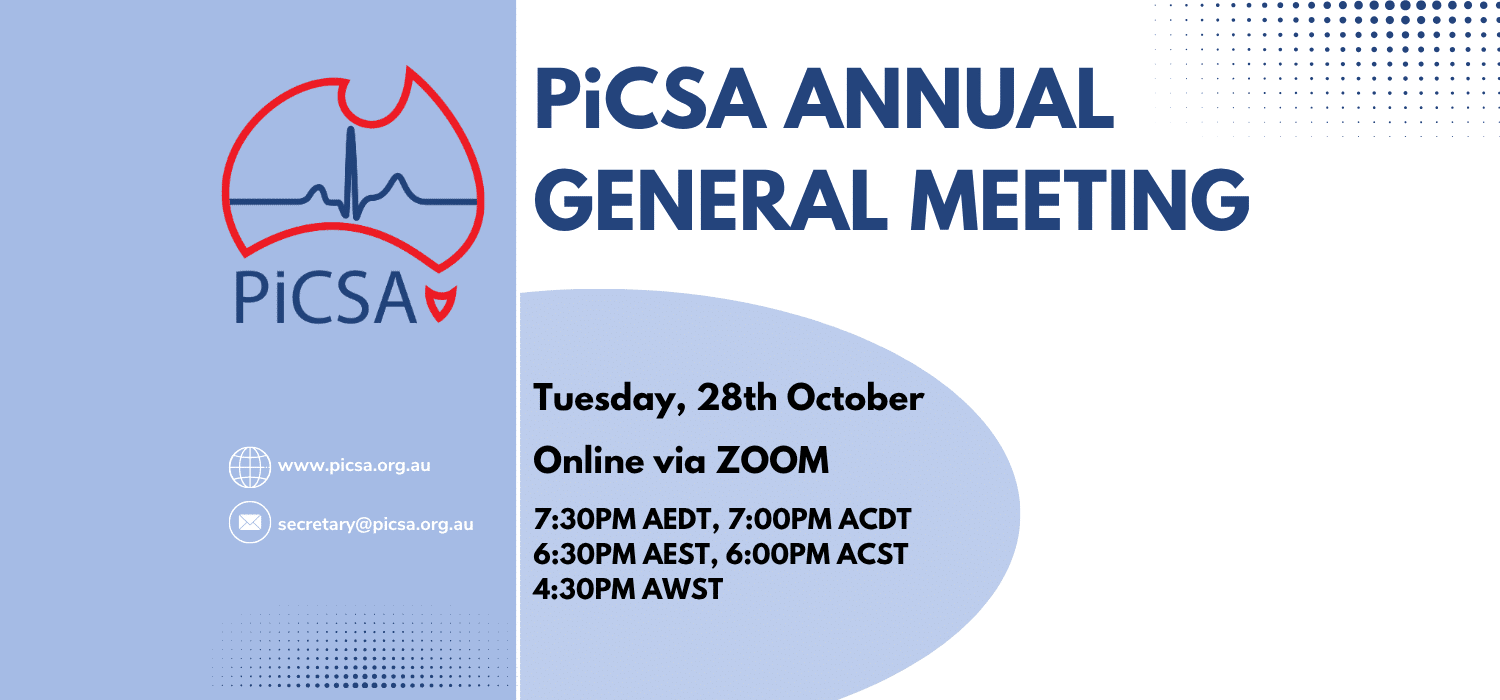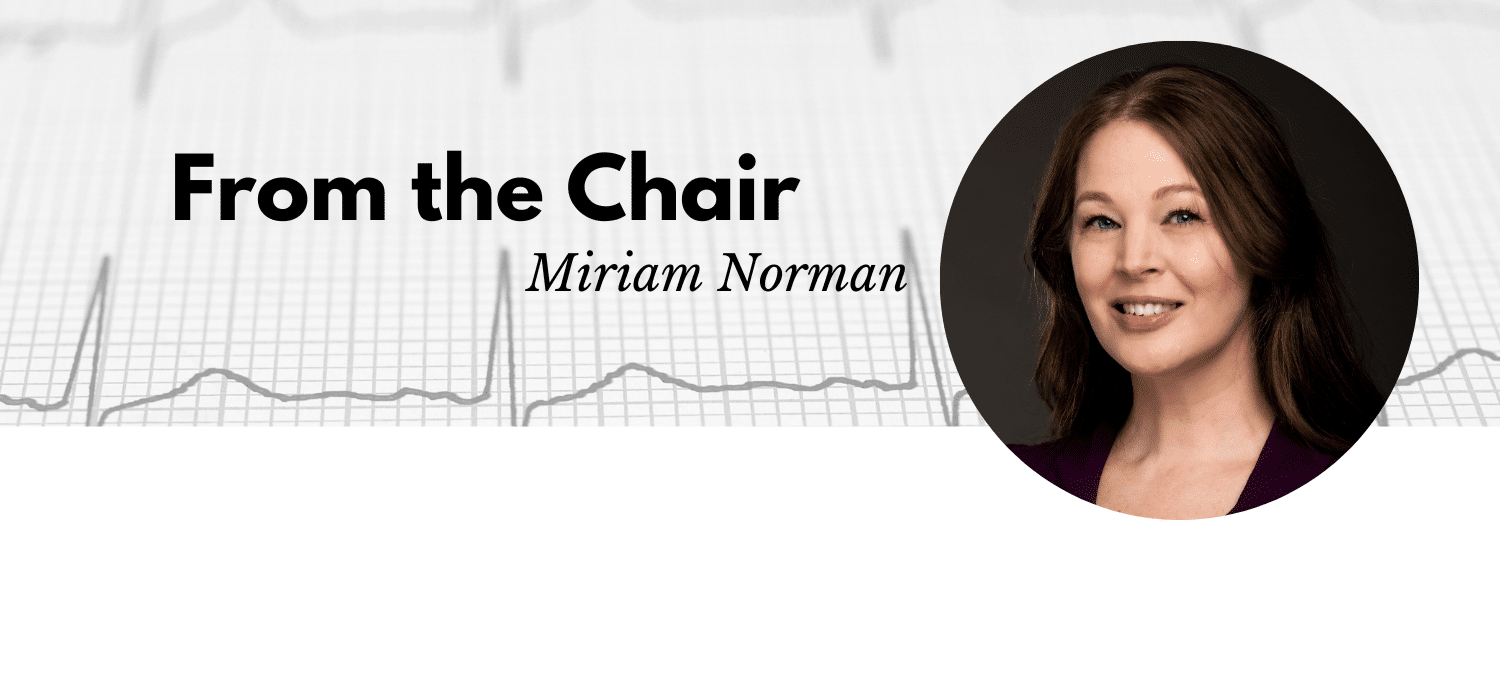Miriam Norman, Royal Hobart Hospital, Tas
Miriam Norman is a highly regarded multi-modality specialist cardiac physiologist with qualifications in both cardiac implantable electronic devices and echocardiography. Based at Royal Hobart Hospital, she brings a multi-modality approach and valuable clinical insight to the forefront of modern cardiac care.

In the powerful article Lying for a Living1, published in the Journal of Medical Imaging and Radiation Sciences, Megan Brydon explores the emotional challenges faced by medical imaging professionals who must maintain a neutral demeanour while scanning—even when confronted with serious or distressing findings. Often, this occurs in the face of pleading patients (or parents) desperate for answers.
The practice of withholding findings, while intended to protect patients from premature or unverified information, can take a heavy emotional toll. Brydon’s reflections resonated with me—I’ve felt that same discomfort. I suspect many of us across the profession have. We’ve all been there.
Her article prompted me to reflect on my own experiences and ask: “Do I still feel the same way?” In this response, I’ll share how I’ve (mostly) come to terms with the communication limits of our role, and how certain experiences have shaped my thinking.
Lingering emotional and psychological discomfort arises when we feel unable to do the right thing or are forced to act against our values. Even when we follow protocol, maintain professionalism, and say the “right” thing—the experience can still linger. Over time, repeated situations that generate moral residue can lead to moral injury and burnout. If this is an occupational hazard, then we need strategies to avoid or manage it.
In the world of echo physiology/cardiac sonography we regularly spend 45 minutes or more with patients, eyes glued to a screen, carefully analysing pathology while maintaining a calm, unreadable exterior. We often say, “Sorry, I can’t give you your test result,” and try to move the conversation elsewhere. This is easier said than done when we are focusing intensely on image details, and the patient knows that we are withholding information. It can be tough on them and tough on us.
Three Moments That Shaped My Approach
1. Parental distress: I once watched my supervisor navigate a scan on a newborn with minor cardiac abnormalities. The mother, understandably anxious, knew something was up. My supervisor was trying to teach me whilst not disclosing results to the mother. At the end of the study a doctor came in, stated the findings using a dismissive tone and technical language, and left. No one really connected with the mother, explained things properly, or addressed her concerns with compassion. It stayed with me – and it changed how I now respond.
Now when something similar happens, I grab a post-it-note, write down the term the doctor used, and hand it to the patient/parent, suggesting which websites might be helpful. If there is time, I use plain language to explain: “This is the term the doctor used – here it is written down for you – and this is what it means…”
2. Myxoma disclosure: One Friday afternoon, I was scanning a patient (with student nurses observing) and discovered a large atrial myxoma—a perfect “Instagram-worthy” textbook case. I kept my face neutral, advised the patient I’d be back in a minute, stepped out and notified the responsible cardiologist before he left for the weekend. He walked in, took one look, visibly startled, and exclaimed loudly: “Oh my God!” That’s how the patient found out something was seriously wrong.
What I took from this experience was that doctors are human too, and that, all too often, time and space for proper patient communication are lacking. Sometimes I can help fill these gaps (more on this later).
3. Bad or Good LV dysfunction: I completed a scan thinking “that is a truly terrible left ventricle”, but kept my mouth shut. The doctor came in, saw my images and said to the patient, “This is a good result.”
My first (internal) reaction was “you’ve got to be kidding”—until I realised that the doctor (who knew more of the patient’s story than I did) had expected the heart to look much worse. It really WAS a good result for my patient. Had I spoken too soon, they would have received contradictory advice and not known who to believe.
That moment reminded me that I don’t hold the full picture. It’s not just about what I see—it’s about clinical context, history, and a bigger treatment plan. That result really was good, given the circumstances. If I had spoken too soon, I could have confused the patient and undermined the doctor’s communication.
But even with these boundaries, we still have a valuable communication role
Before we even begin scanning, the way we introduce ourselves can set the tone and help manage expectations2. I always start with: “Hi, my name is Miriam. I’m the Cardiac Physiologist who will be performing your scan today.” (Note: I sometimes rephrase this using the term Sonographer, which is equally appropriate.)3
Throughout the interaction my aim is to:
- Ensure the patient feels respected and supported
- Promote conversation (when conditions permit) that:
– Empowers, validates, and supports
– Improves health literacy
– Sets the stage for effective follow-up conversations with their medical team
Simple, open questions like, “Do you know why you’re here today?” or “What do you understand about your diagnosis so far?” can invite trust and initiate meaningful dialogue.
If a diagnosis has already been given—say, “atrial fibrillation”— it’s not stepping outside of our scope to check that they have a basic understanding, see if they want to talk about it, and explain it for them in plain English if they’d like us to. We can also have handouts and website references on hand to share – even handing them a sticky note that lists the key words their doctor used can be extremely helpful. It is absolutely appropriate to explain why the test has been requested and how it might help to guide therapy — these conversations can generate human connection, provide clarity, reduce overwhelm, and empower patients to fully engage in the next steps of their care.
Actively establish patient expectations
Be upfront about when patients will receive their results—and explain why there may be a delay. We’re not being deliberately cruel! – there are good reasons for the policy and most patients appreciate an explanation. Sometimes I share the above LV dysfunction story with patients to provide context.
Over time, I’ve developed a handful of go-to phrases that help me set expectations clearly and compassionately. These can be easily adapted depending on the setting and the patient’s personality.
For example:
- “Results are best delivered when you’re clothed and upright, and by someone who has seen all your test results and is able to give you the full story.”
- “I can tell you what I’m looking at, and why, but I’m not allowed to tell you whether it looks good or bad.”
- “I don’t have a conclusion yet. After you leave, I’ll go over the footage, take more measurements and compare them with your prior scan.”
- “Our doctors will check the images to make sure nothing has been missed.”
- “I never tell anyone their heart is ‘normal,’ because ultrasound doesn’t show everything. I can’t see your heart’s electrical system or the coronary arteries.”
- “If something looked really dangerous, I’d find a doctor to speak with you so you wouldn’t be left waiting.”
- “Would you like to practice asking your questions for the doctor? I can help you prepare.”
- “I think your doctor will be pretty happy with this scan.”
- “It’s probably not as good as when you were 20, but I’ll leave it to the doctors to say whether it’s what they were expecting.”
- “I can’t give results, but I’ve made sure the important things are documented for your doctor to review. I think this scan is going to be really helpful.”
- “Your concerns will be addressed, and things will be explained properly—by someone who has the full picture.”
Not Silent, Not Overstepping
I strongly believe that Cardiac Physiologists are a wasted resource if we keep our mouths completely shut. We can:
- Improve patient understanding of known conditions
- Clarify the purpose of the scan
- Reinforce key messages from the care team—such as first aid action plans, medication adherence, or when to seek medical help
- Encourage and support lifestyle change, including smoking cessation
- Help set clear expectations
- Reinforce trust in their treating team
We’re also in a unique position to counteract the growing wave of distrust in medicine. Patients often ask questions during a scan that reflect their uncertainty or fear about the system. By being appropriately personable, empathetic, and trustworthy, we can play a quiet but powerful role in restoring confidence. Conversely, if we’re insensitive—or don’t explain why we’re not giving results—patients may feel mistreated and become more vulnerable to anti-science or anti-medicine rhetoric.
While these conversations can be valuable, it’s important to remember that our primary role is to perform a diagnostically excellent scan—efficiently, accurately, and thoroughly. Communication is important, but not at the expense of image quality or diagnostic value. We shouldn’t allow ourselves to get so caught up in conversation that we compromise the scan itself, and at times we may need to shut conversation down altogether.
It is worth reflecting on who sets the expectations around what we can and can’t say. Many of us say, “I’m not allowed to tell you your results,” but have we confirmed exactly what our employers expect? What if the scan appears entirely normal—are we still required to say nothing? Are there scenarios where we’re encouraged to provide more information or support as part of a broader scope of practice? To what degree are we permitted to use our discretion and professional judgement?
These are questions worth discussing within our teams and with our consultants. The issue isn’t just legal – it is cultural, and authority may be delegated or adapted to modern interdisciplinary realities. Clarifying (and documenting) local expectations can help ensure we’re not being overly cautious to the detriment of our patients, our doctors, or ourselves.
For those wanting more practical ideas on communicating with cardiac patients, I’d encourage a look at The Art of Explaining Things (Norman, 2022)4, published in the Rhythm Strip newsletter by Professionals in Cardiac Sciences Australia (www.picsa.org.au).
Communication with Integrity
I’ve come to feel more comfortable in these complex moments because I see myself as part of a bigger team—and I trust that team. It may not be my role to disclose new findings, but there are plenty of appropriate ways to reassure, inform, and support both the patient and the care team.
I don’t need to sit silently or employ deceitful deflection. I can offer genuinely supportive communication that openly defers to the right person, at the right time, in the right context.
By focusing more on what I CAN do rather than what I can’t, I shift my situation from one of restriction to one of empowerment. There is almost always something meaningful I can offer—something that helps the patient feel safe, respected, and heard, while keeping me within my scope and professional boundaries.
If I can make someone’s experience of modern medicine just a little more positive, a little more human, then I’ve done something that matters. I’m not here to lie to patients—I’m here to help them understand the process, feel supported, and leave with trust in the people caring for them. That’s something I can be proud of.
References
1. Brydon, M. (2024). Lying for a living. Journal of Medical Imaging and Radiation Sciences, 55(3), Article 101435. Available at: https://doi.org/10.1016/j.jmir.2024.101435
2. Norman, M. (2017, Spring). Hello my name is Miriam, and I am a Cardiac Physiologist [Newsletter article]. The Rhythm Strip (Newsletter for Professionals in Cardiac Sciences Australia, Spring 2017, pp. 4–5). Retrieved from https://www.picsa.org.au/, also available at the following link: https://www.linkedin.com/pulse/hello-my-name-miriam-i-am-cardiac-physiologist-tony-forshaw/
3. Professionals in Cardiac Sciences Australia. (2020, August). National title for cardiac physiologists in Australia: Position statement (Updated August 2020). https://picsa.org.au/wp-content/uploads/2022/12/PiCSA-National-Title-updated-August-2020.pdf
4. Norman, M. (2022, Summer). The art of explaining things: The importance of helping patients to understand [Newsletter article]. The Rhythm Strip (Newsletter for Professionals in Cardiac Sciences Australia, Summer 2022, pp. 7–13). Retrieved from https://www.picsa.org.au/








